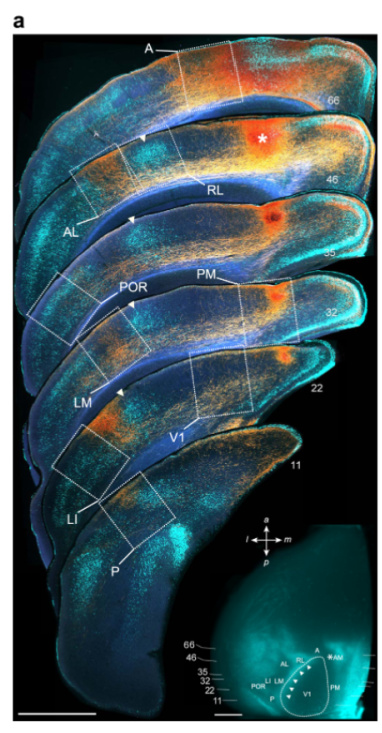The visual world we and other animals perceive is not always a faithful representation of reality. Our brains take in visual stimuli and process them to generate an interpretation of a scene, which is sometimes a distortion of the real world. Take, for instance, optical illusions, such as the famous case of the Charlie Chaplin mask. As the mask rotates to reveal the inner, concave side, the nose appears to invert and stick out toward the viewer, rather than away.
Such illusions demonstrate how “feedback,” or top down, information can alter the perception of information provided by “feedforward,” or bottom-up, neuronal pathways in the brain. Dysfunctions of such top-down communications are associated with psychosis, hallucinations, delusions, and schizophrenia. In the US, the prevalence of psychotic disorders ranges from roughly 2 to 6 individuals out of every 1,000, according to the National Institute on Mental Health, making them an important public health issue, yet the neurocircuitry underlying misinterpretations of the world around us isn’t clear.
In a study published January 26 in Nature Communications, Andreas Burkhalter, PhD, Professor in the Department of Neuroscience at Washington University School of Medicine, and colleagues clarify some of the organizational principles of visual processing—specifically, the feedforward and feedback circuits—in the mouse visual cortex. They find that cells form hierarchical pathways that pass along information to areas representing increasingly complex visual features, and that these hierarchies have a corresponding feedback leg. In addition, lateral or non-hierarchical connections link areas of similar rank to one another.

Figure 1a from D’Souza et al., Nature Communications, 13:503, 2022.
“Both feedback and lateral types of connections are thought to provide the context in which a stimulus is seen, which helps to interpret the visual scene,” says Burkhalter. “Non-hierarchical communications are faster, enable the rapid discrimination of visual targets from the surround and are involved in grouping image elements to enable detecting shapes. In contrast, hierarchical communications are slower, used to compare incoming information with an internal model and are essential for interpreting the outside world.”
The team discovered these connected hierarchies by injecting tracers of neuronal pathways into various areas of the visual cortex that they had previously identified. They then mapped the information flow from each area by observing the laminar distribution of labeled axon terminals in each of the target areas to which they were connected. They found clear hierarchies consisting of reciprocating feedforward and feedback tracks. But they also found reciprocating connections that were not part of a hierarchy of information processing.
For example, the hierarchical chain that progresses from the primary visual cortex (V1) to the rostrolateral (RL) area, then anteromedial (AM) area, and finally to the postrhinal (POR) area is interconnected with a parallel hierarchy, which goes from V1 to the anterolateral (AL) area and POR. Both hierarchical chains are connected by non-hierarchical lateral connections between AL and RL.
These so-called non-hierarchical circuits—those that don’t follow the hierarchical pattern—are thought to contribute to higher cognitive functions, and represent an evolutionarily ancient motif in the mammalian brain. “These observations support the notion that nonhierarchical circuits expand the role of the visual cortex in mediating higher-order functions,” the authors write in their study.